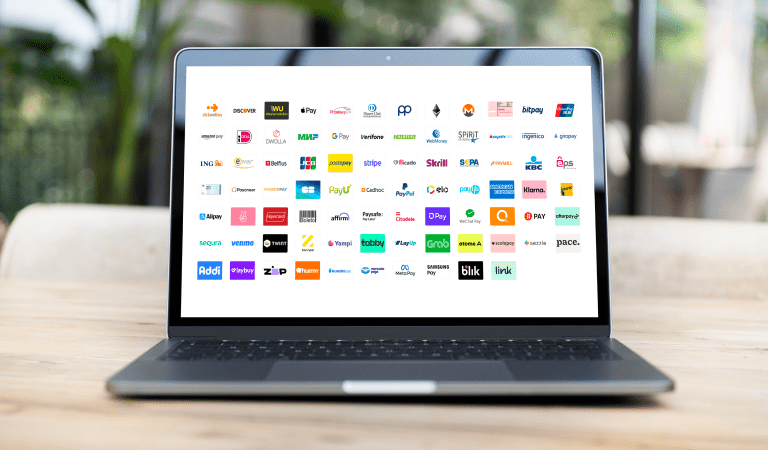Headless CMS: a strategic advantage for modern web development

Headless CMS meaning, core concepts & development insights 🔍
A headless content management system (CMS) is transforming web development by decoupling content storage from its presentation layer. This architecture provides greater flexibility and efficiency, which is increasingly crucial as businesses strive to deliver content across multiple channels. By 2025, it’s predicted that headless CMS solutions will dominate over 70% of the content management systems globally (WorldMetrics).
A headless CMS allows content to be managed independently of the front-end, meaning the content can be delivered via APIs to any device or platform. This flexibility supports seamless content distribution and consistent user experiences across websites, mobile apps, and IoT devices. For instance, 43% of businesses reported reduced time to market after deploying a headless CMS (WorldMetrics).
Traditional CMS platforms integrate content management and presentation layers, which can limit flexibility and scalability. In contrast, a headless CMS separates these layers, allowing developers to use any frontend technology they prefer. This separation enhances performance and scalability, as updates to the backend do not affect the frontend. Websites built using headless CMS frameworks load 38% faster on average compared to traditional CMS frameworks (WorldMetrics).
Headless CMS architecture supports omnichannel content delivery, meaning content can be published simultaneously on various platforms, ensuring a consistent user experience. This is crucial as digital experiences are directly linked to increased revenue—82% of users believe that enhanced digital experiences correlate with greater revenue (Contentstack).
In headless development, developers have the freedom to choose tools and frameworks that best fit their project requirements. This flexibility accelerates development cycles and fosters innovation, leading to more dynamic and responsive web applications. Over 60% of developers prefer headless CMS for its flexibility in integrating with other APIs and services (WorldMetrics).
Overall, adopting a headless CMS can significantly enhance a business’s digital strategy. Companies using headless CMS solutions report up to a 50% reduction in time to market and improved content personalization capabilities (Experro).
Headless CMS advantages ⭐️
Adopting a headless CMS offers numerous benefits, significantly improving the efficiency and flexibility of web development. These advantages are driving a growing number of organizations to transition from traditional CMS platforms to headless solutions.
One of the primary benefits of a headless CMS is its ability to enhance flexibility. Since the content management and presentation layers are decoupled, developers can use any frontend technology they prefer. This freedom allows for more innovative and customized user experiences across different platforms and devices.
Another advantage is improved performance. Websites built with headless CMS frameworks tend to load faster because the backend processes and frontend presentation are handled independently. This separation means that content updates do not interfere with the website’s performance, leading to a smoother and quicker user experience.
The headless CMS architecture also enhances scalability. As businesses grow and their content needs become more complex, a headless CMS can easily adapt without requiring a complete overhaul of the system. This scalability is particularly beneficial for businesses aiming to deliver content across multiple channels, such as websites, mobile apps, and IoT devices.
Security is another significant advantage. By separating the backend and frontend, the attack surface is reduced, making it harder for cyberattacks to compromise the entire system. This enhanced security is crucial for businesses handling sensitive data and aiming to protect their digital assets.
Moreover, headless CMS platforms support better omnichannel delivery. Content can be managed centrally and delivered across various touchpoints, ensuring consistency and coherence in the user experience. This capability is essential as consumers increasingly expect seamless interactions across different devices and platforms.
Finally, adopting a headless CMS can lead to reduced time to market. Businesses using headless CMS solutions report up to a 50% reduction in time to market, as the decoupled nature allows for faster development and deployment of new features and content (Experro).
In summary, the benefits of a headless CMS—flexibility, improved performance, scalability, enhanced security, and better omnichannel delivery—make it a strategic choice for modern web development. These advantages help businesses meet the evolving demands of digital consumers while staying ahead in a competitive market.
Headless CMS: what are the options? 🤔
When choosing a headless CMS, it’s important to consider the various options available to find the one that best suits your needs. Here are some popular headless CMS examples and platforms, each offering unique features and capabilities.
- WordPress: while traditionally known as a monolithic CMS, WordPress can also be implemented as a headless CMS. By using the REST API or GraphQL, developers can decouple content management from the frontend. This approach allows WordPress, the leading CMS worldwide, to offer the flexibility and performance benefits of a headless system while leveraging its extensive plugin ecosystem. For those who want to explore WordPress as a headless CMS, feel free to visit our WordPress development services page. We are happy to help.
- Contentful: headless CMS platform known for its robust API capabilities and flexible content modeling. It is widely used by enterprises for its scalability and strong integration options. Contentful supports both RESTful and GraphQL APIs, making it a versatile choice for developers.
- Strapi: an open-source headless CMS that allows for complete customization. It provides a user-friendly interface and supports both RESTful and GraphQL APIs. Strapi is particularly popular among developers who prefer an open-source solution that they can tailor to their specific needs.
- Sanity: offers real-time collaboration features and a highly flexible content model. It provides a robust API and a rich text editor that developers can customize. Sanity is well-suited for teams that need to collaborate closely on content creation and management.
- Prismic: known for its user-friendly interface and Slice Machine, which allows for the creation of reusable content components. Prismic supports dynamic content management and is particularly good for marketing teams that need to rapidly update content across various platforms.
When evaluating headless CMS systems, consider factors such as ease of integration, scalability, support for multiple languages, and the availability of customization options. Each platform has its strengths, and the best choice depends on your specific project requirements and goals.
These headless CMS platforms offer diverse features and capabilities, ensuring that you can find a solution that aligns with your technical needs and business objectives.
What is the best headless CMS? Comparison 🏅
Choosing the best headless CMS involves evaluating key features, flexibility, and performance. Here’s a comparison of five leading headless CMS platforms: WordPress, Contentful, Strapi, Sanity, and Prismic.
WordPress
Advantages:
- Extensive plugin ecosystem
- Large community and support
- Flexible and customizable
Insights: WordPress’s vast library of plugins and themes makes it highly adaptable, allowing for tailored solutions that meet specific project needs. Its dominance in the CMS market is a testament to its reliability and versatility.
Contentful
Advantages:
- Strong API support
- High scalability
- Enterprise-level features
Insights: Contentful’s ability to handle complex content workflows makes it ideal for large organizations. Its extensive API capabilities facilitate seamless integration with various platforms and services.
Strapi
Advantages:
- Open-source and customizable
- User-friendly interface
- Strong API support
Insights: Strapi’s open-source nature enables developers to modify and extend the platform to meet specific requirements. This flexibility is particularly beneficial for projects that demand bespoke solutions.
Sanity
Advantages:
- Real-time collaboration
- Flexible content modeling
- Customizable rich text editor
Insights: Sanity’s emphasis on real-time collaboration and dynamic content management makes it a strong choice for interactive and content-heavy projects. Its ability to support simultaneous editing by multiple users enhances productivity.
Prismic
Advantages:
- User-friendly interface
- Slice Machine for reusable content
- Efficient content management
Insights: Prismic’s Slice Machine feature enables efficient creation and management of reusable content components, streamlining the content update process. This is especially useful for marketing teams that require agility in content delivery.
Ultimately, the best headless CMS for your project will depend on your specific needs and goals. Each platform offers unique features and capabilities, ensuring you can find a solution that aligns with your technical requirements and business objectives. It’s like choosing between Mac and PC or iOS and Android – it depends on your preferences and what you need to achieve.
Is there a free headless CMS? 💵
Yes, there are several free headless CMS options available that cater to different needs and project requirements. These platforms offer robust features without the financial burden, making them ideal for startups, small businesses, or developers experimenting with headless architecture.
- WordPress
- Strapi
- Directus
- Netlify CMS
- Cockpit
- Payload CMS
These free (open-source) headless CMS platforms offer a range of features and capabilities, ensuring that developers can find a solution that fits their specific needs without incurring significant costs. Whether you need the extensive plugin ecosystem of WordPress, the flexibility of Strapi, or the simplicity of Cockpit, there is a free headless CMS available to suit your project.
When it comes to finding the best free headless CMS, it’s challenging to declare a single platform as the best. It largely depends on your specific preferences, experiences, and project requirements. However, headless WordPress is certainly worth considering due to its status as the most popular CMS worldwide, and for good reasons.
Key advantages of headless WordPress:
- Extensive plugin ecosystem: With thousands of plugins available, WordPress can be easily extended and customized to fit various needs.
- Large community and support: Being the most widely used CMS, WordPress boasts a vast community and extensive documentation, making it easier to find support and resources.
- Flexibility and customization: The REST API and GraphQL support allow developers to decouple the backend from the frontend, enabling the creation of highly customizable and dynamic websites.
- User-friendly interface: WordPress’s intuitive interface makes it accessible to users of all technical levels, from beginners to advanced developers.
- SEO capabilities: WordPress is well-known for its strong SEO features, which help in optimizing content for search engines effectively.
- Comprehensive content management features: WordPress comes with a wide range of content management features out of the box, such as an easy-to-use editor for creating and formatting content, media management for uploading and organizing images and videos, and built-in blogging capabilities. Additionally, it offers features like customizable themes, user roles and permissions, and a revision history to track content changes.
Considering these benefits, headless WordPress stands out as a versatile and powerful option among the best free headless CMS platforms available. Whether you’re starting a new project or transitioning from a traditional CMS, WordPress offers a robust foundation to build upon.
If you are interested in exploring the possibilities of a headless WordPress CMS, our team has extensive experience in delivering tailored solutions that leverage the full potential of this powerful platform. We can help you create a flexible, scalable, and dynamic web presence that meets your unique requirements. Let’s talk about how we can assist you in implementing a headless WordPress CMS that drives your digital strategy forward.



